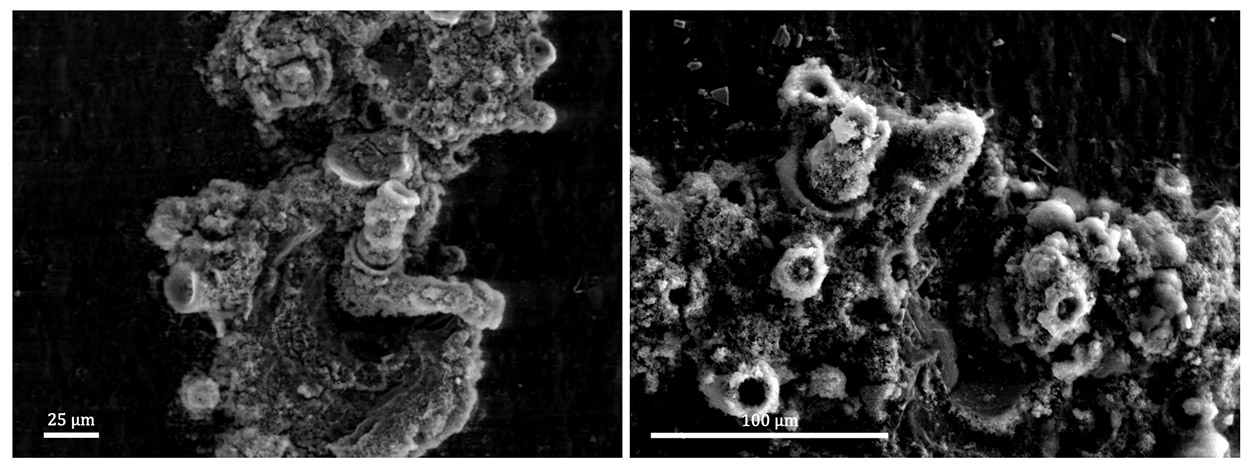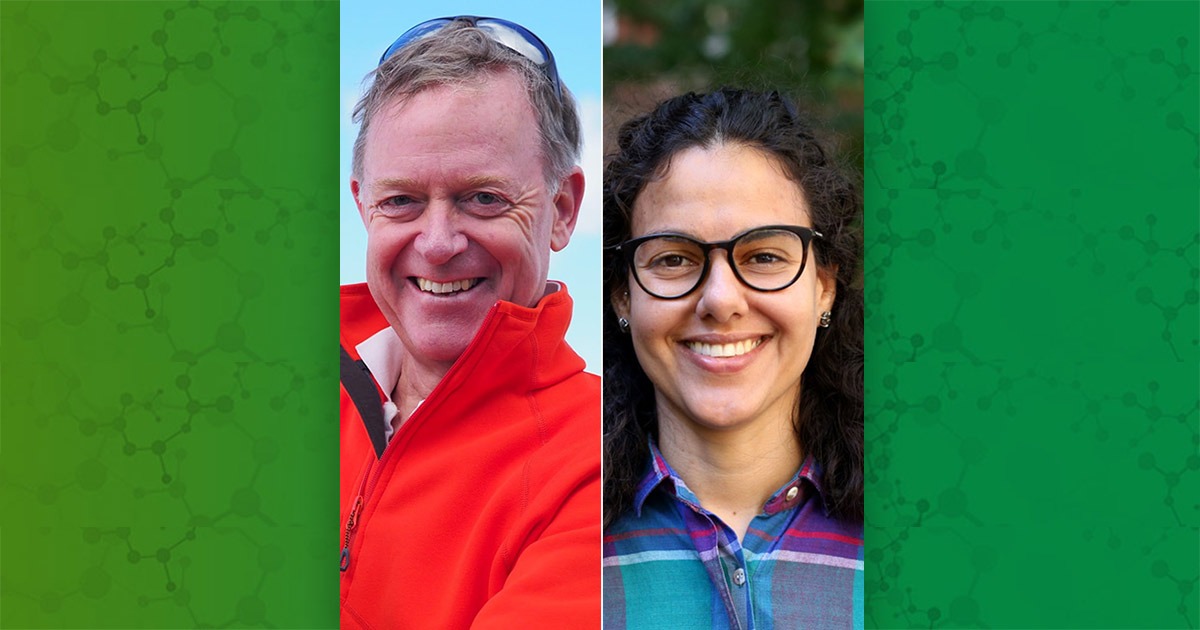NIEHS grantees from the University of Pennsylvania (Penn) Department of Earth and Environmental Science recently discovered that bacteria from extreme marine environments have the potential to detoxify asbestos. Their study, published in the journal Applied and Environmental Microbiology, suggests that the marine microbes may be better candidates for asbestos bioremediation than previously tested fungi and soil bacteria.
Asbestos materials, a group of naturally occurring minerals once widely used in a range of industries for their strength and heat resistance, are notorious for being a health hazard. Although their use has declined substantially, the minerals are not banned in the United States, and people can still be exposed when asbestos-containing buildings are disturbed during renovations or demolition.
The hazard hit close to the researchers’ home when several schools in the Philadelphia school district were closed after failing asbestos inspections. Penn has pledged a $100 million contribution to the School District — $10 million annually for 10 years — to be used to remediate environmental hazards, including asbestos and lead, in public school buildings. Better remediation options, however, are needed for dealing with asbestos.
“We wanted to expand asbestos bioremediation research by exploring ways to lower the toxicity of these minerals for safer disposal or reuse as secondary raw materials,” noted senior author Ileana Pérez-Rodríguez, Ph.D., an assistant professor of earth and environmental science who specializes in studying extremophilic deep-sea microbes.
Bacteria use iron in asbestos to grow
Pérez-Rodríguez teamed with Reto Gieré, Ph.D., who has a long history characterizing asbestos minerals. They thought that these extremophilic microbes might be good candidates for asbestos bioremediation because they use inorganic compounds and interact with a variety of minerals in their natural environments.
The team focused on two bacterial species, Deferrisoma palaeochoriense and Thermovibrio ammonificans, to target two aspects of asbestos minerals that make them dangerous when inhaled: their iron content, which is largely responsible for the material’s carcinogenic effects, and their fibrous structure, which causes inflammation.

To test the microbes’ ability to detoxify asbestos, the researchers incubated them for seven days at 60 °C or 75 °C — the microbes’ preferred temperatures — in small liquid-filled bottles that also contained asbestos minerals. Across this period, the researchers took samples of the liquid media to track cell growth and changes in chemical composition, and they used electron microscopy to look for changes in mineral structure.
They found that D. palaeochoriense, which uses iron as part of its metabolism, could effectively remove some iron from asbestos while using it to grow. However, this removal of iron did not change the mineral’s overall fibrous structure, which is partially responsible for its toxicity.
“This is a gradual process of taking a highly hazardous mineral and making it less hazardous,” Pérez-Rodríguez said. “You can make the mineral less toxic by eliminating the chemical reactivity that comes with the iron, but you still have that fibrous structure, so the next question is: ‘How do we break down the shape?’”
Bacteria can target fibrous structure
Asbestos minerals are composed of a silicate backbone, and previous studies have shown that removing silicon and magnesium ions from this backbone can disrupt its fibrous structure. This is where the second bacteria, T. ammonificans, came in.

“We can see through microscopy that these microbes incorporate silicon into their biofilms,” Pérez-Rodríguez said. “Usually when we think about biofilms, we think about a sort of slimy goo, but, in this case, the biofilms are actually quite rigid — they’re basically creating little houses made out of rocks.”
The researchers found that T. ammonificans could accumulate silicon from “serpentine” asbestos, which has curly fibers, but not from “amphibole” asbestos, which has straight needle-shaped fibers.
“This really highlights the difficulty of approaching asbestos treatments as a one-size-fits-all solution, given the unique chemical compositions and crystal structures associated with each asbestos mineral,” Pérez-Rodríguez explained.
Future directions
Microbial-based asbestos treatments are a desirable alternative to current asbestos treatment methods, which involve either heating it to very high temperatures and pressures or by treating it with strong acids or bases. However, more research is needed to test how these methodologies could be used to remediate asbestos on a large scale.
“This was just a first lab test, and of course there are still questions, and we would have to do much more research, but hopefully we can take it to the next level,” Gieré said.
The study was co-authored by former postdoctoral researchers Jessica Choi, Ph.D., now a postdoctoral researcher at the University of Michigan, and Ruggero Vigliaturo, Ph.D., now an assistant professor at the University of Turin.
Citation: Choi JK, Vigliaturo R, Gieré R, Pérez-Rodríguez I. 2023. Microbe-mineral interactions between asbestos and thermophilic chemolithoautotrophic anaerobes. Appl Environ Microbiol 89(6):e0204822.
(This article was adapted from a July 6 publication by Penn Today, written by Liana F. Wait, science news officer.)
Source link
factor.niehs.nih.gov


